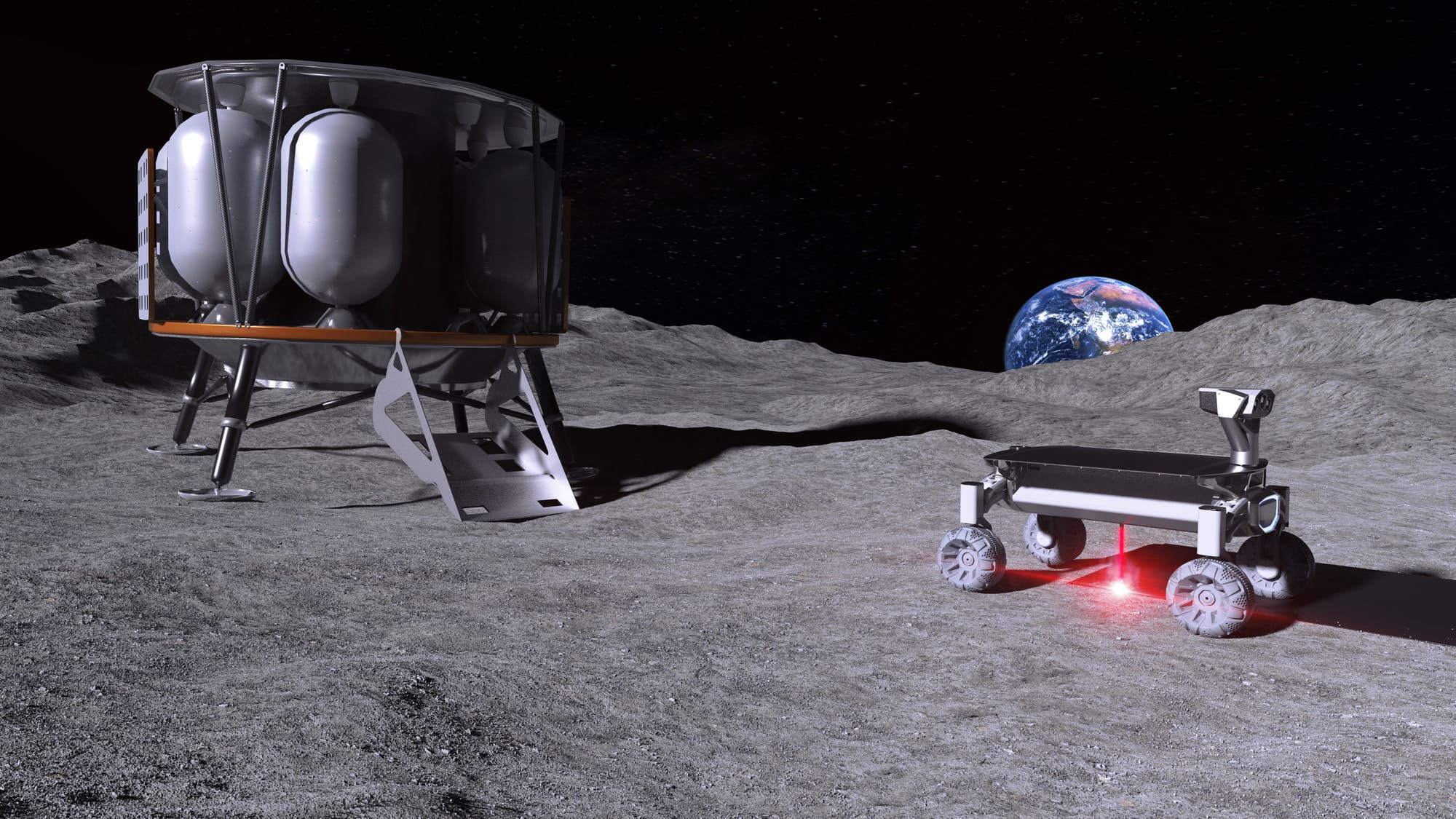The Institute of Space Systems (IRAS) of the Technical University of Braunschweig and, Laser Zentrum Hannover e.V. (LZH), a laser technology expert from Lower Saxony, are working to make moondust into building material.
Currently, a laser system is under development which will be able to melt lunar regolith to make it into raw material that can be used for construction on the Moon. The flight to the moon is expected in 2021.
Niklas Gerdes a research assistant at the LZH said, “We want to bring a laser system to the moon, which is supposed to melt moon dust, the so-called regolith. We would thus take the first step to take Additive Manufacturing, that is 3D printing, to the moon.”

Laser 3D printing rover
The LZH was founded in 1986 to conduct research in laser technologies. Over the years, the company has extended its talents to space technologies and additive manufacturing. Funded by the Ministry of Economic Affairs, Employment, Transport and Digitalisation of Lower Saxony, the LZH is working to make the possibility of space travel real.
One of the reasons for using lunar material is the cost of payload which can range between $10,000 to $100,000 per kilo for lower earth orbit. Minimizing payload costs is currently one of the primary concerns of space companies.
To counter payload costs, the use of regolith or local material from the planet has been proposed. NASA’s 3D Printed Habitat Centennial Challenge is a good example of this.
LZH’s and IRAS has proposed that a less than three kilos laser melting system mounted to a rover should be transported to the moon. Once at the moon, the Moonrise laser system will work autonomously to turn regolith into material that can be shaped for various applications.
Currently, the research team is working on mounting the laser to the rover.

Sustainable space travel
Among IRAS primary goals are finding sustainable ways of space travel and managing space debris. The Moonrise project is also an effort in this direction.
Funded by the Volkswagen Foundation, the first flight of the laser system is expected to launch in 2021 with the technical support from the Berlin-based space company PTScientists.
On the future of the Moonrise project and space travel, Dr. Wilhelm Krull, Secretary General of the Volkswagen Foundation expressed positive feelings. Krull said, “Fundamentally new insights can often only be gained if scientists and their supporters are willing to take risks […] Even if the outcome of the experiments is still unclear, the foundation wants to resolutely set the path for daring research ideas like this one.”
Vote now for 2019 3D Printing Industry Awards in the category of the best OEM of the year.
Stay up to date by subscribing to our 3D printing newsletter and following us on Facebook and Twitter.
Visit 3D Printing Jobs to start a career in manufacturing.
Featured image shows a 3D rendering of the Moonrise laser 3D printer. Image via LZH.


